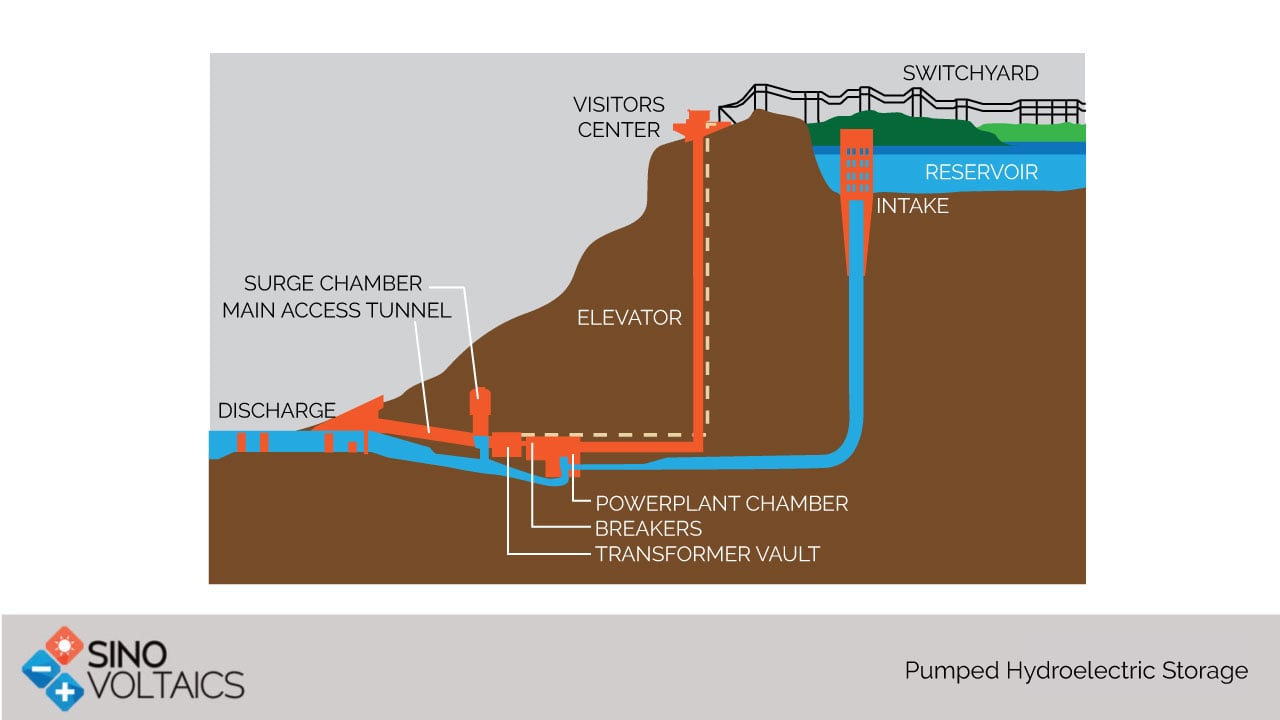Pumped Hydro Storage System
Introduction to Pumped Hydro storage (PHS)
What is Pumped hydro storage (PHS)
Pumped hydroelectric energy storage is a commercial utility-scale water storage technology currently successfully used all over the world. In Pumped hydro technology there are two reservoirs, one reservoir at higher elevation and a second reservoir at lower elevation. They are interconnected with a penstock, a reversible pump/turbine, a powerhouse and a transmission connection to the power grid. A typical pumped hydro system is shown below 
Principle of Pumped Hydro
Pumped hydro employs low cost electricity (typically available at night when power demand is low) to pump water from the lower reservoir to the upper reservoir. During the peak demand periods when electricity requirements increase, the same water is released from the upper reservoir through a turbine into the lower reservoir to generate electricity.
A pumped hydro system is a closed loop
A pumped hydro system can be called a closed loop system. This is because the water that is pumped up from the lower to upper reservoir is the same water that is then released down from the higher reservoir to generate electricity. This water is then repeated multiple times in the loop i.e. Pumped up to higher reservoir and flown back to lower reservoir. The chief component of this closed loop system is a reversible pump/turbine. Reversible pump turbines play the dual role of a turbine as well as a pump in the following way: 1) The turbine spins the water during its downward journey from upper to the lower reservoir thereby producing electricity. 2) The same turbine acts as a pump when water from lower reservoir needs to be transported to higher reservoir.
Pros and Cons of Pumped Hydro Systems
PROS:
1) Pumped hydro systems have an unlimited cycle lifetime because of the endless loop of water circulation that results in continued production of electricity. 2) By storing electricity, PHS facilities can supplement extra power to the grid and protect the power system from an outage. 3) PHS systems can alleviate harmonic distortions as well as check the problem of voltage drops and highs. 4) They have low operation and maintenance costs and have the lowest levelized cost of electricity (LCOE) out of all electrical energy storage technologies. 5) PHS serves as an ideal choice to provide peaking power. While base load power plants like coal and nuclear cannot ramp up fast to provide peaking demands, pumped hydro has an immensely short response time, which is in minutes, and can meet peaking demands as and when necessary.
CONS:
There are many geographical restrictions in the construction of pumped hydro systems. To provide a good megawattage capacity, these systems entail construction of large water reservoirs and alteration of topographies to maintain a proper level difference between lower and upper reservoirs. Also, it takes a PHS plant many years to finish the process of construction. Despite the big plus that the O&M cost of pumped hydro is low, there is still a big downside of a significant capital investment in civil construction. The return on investment of capital therefore materializes over decades of operation. Lastly, there are Environmental impacts too of hydro projects. The damming of a river to create reservoir and the blocking of the natural flow can disrupt the aquatic ecosystem, and endanger wild lives too.
